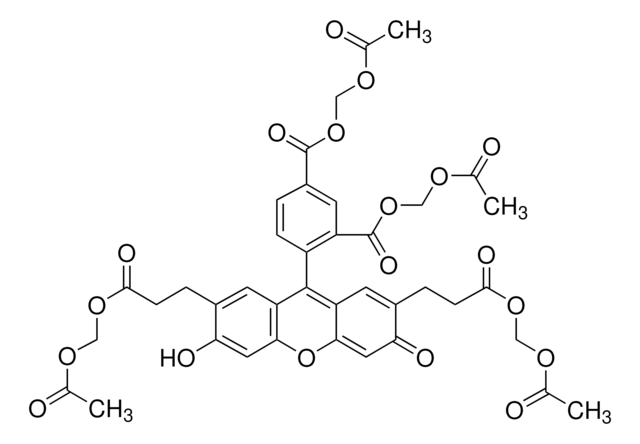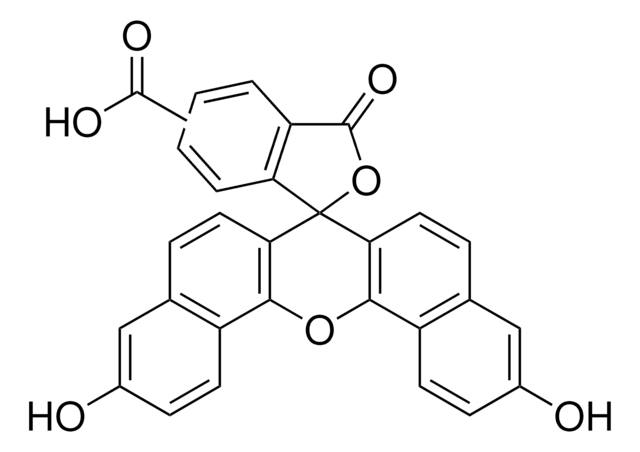37920
6,8-Dihydroxy-1,3-pyrenedisulfonic acid disodium salt
BioReagent, suitable for fluorescence, ≥97.0% (HPCE)
Sinónimos:
DHPDS, Disodium 6,8-dihydroxy-1,3-pyrenedisulfonate
About This Item
Productos recomendados
Línea del producto
BioReagent
Nivel de calidad
Ensayo
≥97.0% (HPCE)
Formulario
powder
pKa
7.33
8.53
mp
≥250 °C (lit.)
solubilidad
DMF: soluble
H2O: soluble
methanol: soluble
fluorescencia
λex 405 nm; λem 456 nm in 0.1 M citrate pH 3.0
λex 458 nm; λem 498 nm in 0.1 M Tris pH 8.0
idoneidad
suitable for fluorescence
cadena SMILES
[Na+].[Na+].Oc1cc(O)c2ccc3c(cc(c4ccc1c2c34)S([O-])(=O)=O)S([O-])(=O)=O
InChI
1S/C16H10O8S2.2Na/c17-11-5-12(18)8-2-4-10-14(26(22,23)24)6-13(25(19,20)21)9-3-1-7(11)15(8)16(9)10;;/h1-6,17-18H,(H,19,20,21)(H,22,23,24);;/q;2*+1/p-2
Clave InChI
JISMNCQKTAIERN-UHFFFAOYSA-L
Aplicación
Envase
Otras notas
Palabra de señalización
Warning
Frases de peligro
Consejos de prudencia
Clasificaciones de peligro
Eye Irrit. 2 - Skin Irrit. 2 - STOT SE 3
Órganos de actuación
Respiratory system
Código de clase de almacenamiento
11 - Combustible Solids
Clase de riesgo para el agua (WGK)
WGK 3
Punto de inflamabilidad (°F)
Not applicable
Punto de inflamabilidad (°C)
Not applicable
Equipo de protección personal
dust mask type N95 (US), Eyeshields, Gloves
Elija entre una de las versiones más recientes:
¿Ya tiene este producto?
Encuentre la documentación para los productos que ha comprado recientemente en la Biblioteca de documentos.
Los clientes también vieron
Artículos
Nitric oxide (NO) as a signal transporter in neurons, endothelial cells and in the immune system.
Nuestro equipo de científicos tiene experiencia en todas las áreas de investigación: Ciencias de la vida, Ciencia de los materiales, Síntesis química, Cromatografía, Analítica y muchas otras.
Póngase en contacto con el Servicio técnico













